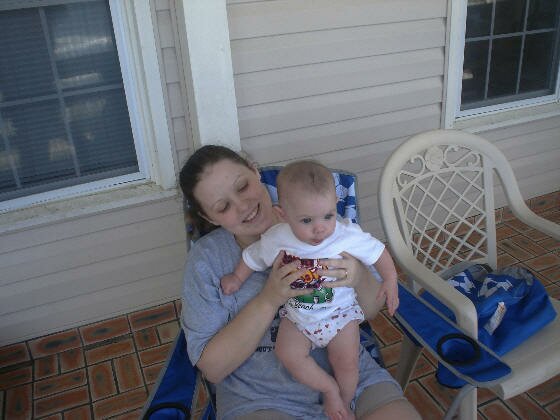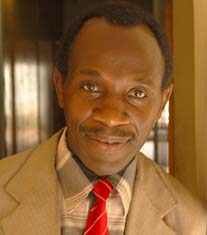
|
|
|||||||||||||||||||||||||||||||||||||||||||||||||||||
|
DEATH AND DYING By : Lucy Njema – KRN:PMCT Officer – CHAK/KENYA
INTRODUCTION Death is cessation of life. It is the permanent, irreversible cessation of the vital functions of the body. Death is a wound to the leaving, its fear is worse than death. There were a lot of death in the past especially with epidemics that were not discovered or no cure found. Medicine and research has changed life in the last decades. Now there are immunizations against diseases like measles, polio, hepatitis that killed people in the past due to their rate of morbidity and lack of people’s knowledge of prevention. In medicine the recent discovery of anti retro viral drugs has really prolonged the life of HIV infected patient. Good ante- natal and delivery care has greatly reduced the rate of maternal and child morbidity and mortality rate. The recent implementation of laws on public transportation has reduced deaths due to road traffic accident by over 60% (Chak time issue no.17, 2004) People wish other to die because of bad things they have done to them. But when they dye the survivors will cry and be overwhelmed with regret, fear and aguish to some extend guilt and will fear their own death. Yet to some (terrorists) it is a holy war, an achievement that even deserves a great reward. For the Christians death is seen as a sleep whereby when the trumpet from Jesus sound the one who died in him will wake up from their sleep. When a Christian dies others believe they will see him/her when their survivors die. They belief there is life after death, which may lead to denial of mortality.
ATTITUDES TOWARDS DEATH AND DYING A child may wish her mother who has denied him/her gratified needs death but this child will be traumatized greatly by her mother’s death. Divorce and separation have the same reaction to child like that of death of a parent. When we grow older and realizes that our strongest wishes are not powerful enough to make the impossible possible, the fear that we have contributed to the death of loved one diminishes and with it the guilt. In the case of couples that fight for years, when one partner dies, the survivor will cry and be overwhelmed with regret, fear and anguish and will fear his own death more. During death and dying process there is grief, denial, anger and acceptance. We need to remember that it is not up to us to judge such feelings as bad or shameful but to understand their true meaning and origin as something very human. I have seen some Christians who stop people from crying and grieving for their loved ones. They tell them to gain courage and stop crying since they have the comforter- Jesus Christ. Some of them stop grieving for the sake of pleasing others, which in away represses feelings that will bother them in future. I wonder where they get this from because according to the Bible John 11:35 “Jesus wept” Lazarus death. When patient are terminally ill and are dying, relatives do everything they can to have the dying relative alive, forgetting the pain he/she is undergoing. The fact that I am a nurse and a professional counselor has helped me know a bit of death and dying but I have never gotten used to people dying and accepting death. Infact I fear my own death, for example “how will I die, how old will I be, will I have actualized ? Most medical professionals have poor patient –doctor/nurse relationship, they actually refer to patients as cases for example “that diabetic case, surgical case…” which is stigmatizing. In the past even in the Bible people killed each other face to face. These days people are afraid of facing each other such that they have developed weapons of mass destruction. In 1998 there were two simultaneous booming in both Kenya and Tanzania destroying properties, left thousand injured and hundreds died. In the September 11th year2001, there was simultaneous worst booming in the recent past in America that caused thousands of deaths and destroyed properties worth millions of dollars. These chemicals of mass destruction do not only kill but also retard the country economically. To my surprise, terrorists are referred to as martyrs by their religion because of their heroism. In Kenya I have had some religions that do not go to hospital and watch their relatives die while praying God to save life. I do belief that God save life but I also belief that the same God give the ability to decide and gave the doctors the knowledge to treat diseases. People have decided not to come into terms with death even the dying ones. The denial is so strong such that they do not want write death wills.The experience I have after working in the wards is that whether the patient is told explicitly or not he will never the less come to this awareness and may lose confidence in a doctor who either told him a lie or who did not help him. The simpler it is done sharing painful news the easier it is usually for a patient who is ready to face death. Patient and relatives appreciate when there are explanations of the outcome rather than vague promise of how the medical team will save the patient’s life. The medical team needs to come in terms with death and dying themselves before helping the terminally ill or dying patient “He shall wipe away every tear from their eyes and there shall no longer be any death, no longer mourning, crying or pain, the first thing have passed away” Revelation 21:4. Denial and Isolation Denial is the process of refusing to accept what is happening while isolation is the state of being on oneself. Denial has about 3 process namely, splitting, internalization and externalization. In splitting the person is aware that the death occurred but still functions emotionally and in his/her behavior as if nothing had occurred. The second process is internalization; people in this stage try to preserve the relationship with the deceased by taking in the person and focusing on his/her internal presence and refusing to let go of the deceased person. An externalizer becomes fixed upon some object or item that is associated with the missing person. This would involve anything from furniture to clothing, and automobile a boat or photograph. All these process of denial are meant to avoid pain of grieving. Denial functions as a buffer after unexpected shocking news, allows the patient to collect himself, it is a less radical defenses. HIV positive and other terminally ill patients who are in denial get several tests to deny their status. Many people use laughter and force smile as a defense for denial. Other people will eat excessively or drink alcohol, smoke in process of denial. In hospitals the staff would rather not spend time with terminally ill patients because they do not want to discuss the prognosis of the illness. People deny the experience, the feelings of grief, other deny to experience because it will bring the feelings of guilt. I think of a criminal abortion, the mother who aborts cannot imagine the guilty she is undergoing after murdering her own child. For me I can imagine been in the state of denial if I was told that I am terminally ill, yet I do believe there is life after death. Denial cause one to be isolated from reality.
Anger, Bargaining, Depression and Acceptance When the first stage of denial cannot be maintained any longer it is replaced by feelings of anger, rage and resentment in contrast to the stage of denial this stage is very difficult to cope with because the anger is displaced in all directions and projected onto the environment at times almost at random (Kubler-Ross 1969). Anger comes as a result of unfulfilled desires and expectations. In death concept I would imagine people because of the way they cannot confront the death itself, they get angry and especially when they know it is irreversible. People never actualize to the maximum and if there is a hindrance to reach to a certain point then there are feelings of anger, rage, bitterness and when one realizes that their lives are shuttered by terminal illness or even death. When people cannot imagine what they have gone through in their lives they feel more angry. They realize they are the cause of the dying process and finally death. They have other anger when they know other people caused pain to them and now can do nothing about it. The intensity of anger will be more when the feelings are not aired. The fourth stage is depression which is reached when the patient can no longer deny his illness and is forced to undergo more surgery or hospitalization, he/she start complaining of pain from other parts of the body-this is referred to phantom pain or force pain. I can imagine in a depression (if a man is terminally ill and cannot provide for the family he will be depressed by the loss of activity and work. The whole family will be affected, the wife becomes the breadwinner and children may have to change life style. If the client has gone through the denial anger, bargain and depression he/she reaches a point of accepting the situation the way it is. This is not a rest of avoidance or a period of getting away from pain or discomfort rather; the client has come to term with his condition and is ready for the outcome. The struggle is over, patient or client has found some peace and acceptance his/her circle of interest diminishes. Recently I saw a patient who was at this stage and I nursed her in her house, she could smile, showed a gesture of hand to invite me to her bed. She grasped my hand and whispered “God is good”. Somehow I felt she was ready to die and was biding goodbye to me but I would not let go since she was such a nice lady. Her hands were so warm but to my surprise she died within twenty-four hours after grasping my hand. I admired her dying process and wished I would die so peacefully. This is the stage that requires a lot of support even if the patient cannot talk, she can still appreciate touch, and since hearing is the last sense to disappear there is a need to whisper supportive and encouraging words, verbally or non verbally. The above mentioned stages does not mean that they occur chronologically in fact some patients do not accept their condition they keep on hoping for better until death. The duration of the stages really differ, but when prolonged for years the client may end up being psychiatric.
COUNSELLING INTERVENTIONDeath and dying counseling is necessary to the person who is dying and the significant others. It is important to help the client cope with this kind of loss because it brings about separation and bereavement. We adjust but it is never quite over. Client comes for counseling of death and dying because of the closeness with the dying. The counselor needs to be aware of the implications and interpersonal relationship between the dying and the client. There would be adjustment problems for example with treatment compliance incase of terminal ill hence the need for counseling. It is even hard for a patient to accept that they will lose one of their limps because of terminal illness leave alone death. Even some relatives and friends may show their reluctance to allow the person to die by encouraging him to fight onto life.The shock often protects the person from the full emotional impact on the strategy. Sometimes Christians make comment such as “stop crying. After all you’re your loved on is with lord now” such comments are not helpful and are quite insensitive Psalms 42:3 states and I quote “my tears have been my food day and night” 2 Samuel 18:33 confers that this is a time of despair and helplessness. When people are angry the counselor need to let them know these are normal feelings. Support is enhanced by the counselor broadening his/her relationship bridge and opens up himself to the counselee. Client will also find support when the counselor help them to remove their anxieties by changing the environment or removes some of the pressures the client experiences. Client who feel inadequate, grief-stricken, unworthy, lonely or fearful about losing control of their feelings are given the specific relationship he/she needed to meet these crises. The client needs to ventilate his feelings, as he would wish to do with the person or the disease causing depression. Client who are at denial need to talk about their impending death by using focusing skill, while the counselor pick up the cues and knowledge that this is the moment at which the client prefers to look at brighter, more cheery things.
SUMMARY. Death is a reality that must be faced by all of us regardless of age or status. The causes of death in the past ranged from inadequate knowledge of diagnosis and no or low vaccination rate. People have different attitude towards death and dying, some belief it is a curse while others belief in life after death. When the clients/patients are undergoing different stages of death and dying the counselor need to offer a lot of support, as the client is around to experience the emotional feelings. Whatever has a beginning has an end. If mankind begins in conception then this mortal life cease in death but can live eternally if one re-unite with his maker before dying.
|
||||||||||||||||||||||||||
|
|
|
|
||||||||||||||||||||||||
|
||||||||||||||||||||||||||
|
|
|
|
|
|||||||||||||||||||||||
Working with Far-Reaching Faith-Based Organization to Spread Injection Safety Training
|
|
|
CHAK trainer Joseph Oyongo participated in MMIS injection safety training and is disseminating injection safety content to the many faith-based health facilities throughout Kenya. |
Over thirty percent of the health care in Kenya is provided
by faith-based organizations (FBO). To capitalize
on the reach of such organizations, MMIS/Kenya is working with the country ’s leading FBO, the Christian Health
Association of Kenya (CHAK), to train health
care instructors on injection safety. Those instructors
will in turn train the nurses, doctors and waste
handlers that work in CHAK’s expansive network
on emerging safe injection technology,
such as auto-disable and retractable syringes, iinfection
prevention and control measures, and proper
waste management techniques. CHAK works in 23
hospitals–-some of which are among the largest in
the country–-as well as 43 health centers,
55 church health programs, and over 300 dispensaries
in every district throughout Kenya.
Two CHAK instructors attended an MMIS training of trainers in Nakru in May 2006, including Health Training Officer Joseph Oyongo. “This (injection safety) is important information and valuable to us as trainers,” Oyongo said of the injection safety training he received. “With the high rates of HIV and hepatitis, it is very important to protect health care workers.” Oyongo said that in order to protect health care workers from infection through needlestick injuries, doctors, nurses, and waste handlers need to be exposed to injection safety training from the beginning of their careers and those who are already in service should receive training as soon as possible.
The response from CHAK’s leadership and instructors has been positive, and as a result the organization hopes to have 60 trainers participate in MMIS’s training of trainer program. The health care workers that receive the training will serve forty percent of the Kenyan population served by CHAK, representing a significant portion of the project’s scale up to nationwide coverage. “In this country, our people believe that the best service comes from FBO’s,” Oyongo said. “Now that I know there are resources, I will use these opportunities to roll out the (injection safety) information to the people who need it most.” MMIS Kenya Country Director Jackson Songa is pleased with the collaboration with Kenya’s faith-based organizations. “Faith-based organizations are an important part of the health care system here, and we are very happy to be working with CHAK,” he said.
.gif)
|
|
Mission Statement
responsibility to meet the
shortage head on, take
charge of our future and
to see that their future
is better than our past"
Male Nurse Magazine is free to you, there is no printed version of it. We are not part of any printed magazine that reports. "It is the first of its kind." We have been here for 5 years listening to you. I feel that we can help more by giving to you information at no cost. I try to you as much advertising money as I can so far it cost me more to run than I make. I feel that as a nurse it is my job to help you.
-Jerry Lucas, RN
You can sign up for our
monthly newsletter on the left hand side of this page, it to is free.

Owner and Publisher of Male Nurse Magazine Jerry R Lucas RN. "I feel that nursing needs a stronger voice."

Above is my daughter Amanda Lee and my granddaughter. She was taken in 2005. Amanda was born Oct 1986 and on her way home on to my hog roast she was hit head on 1200 feet from my drive. I worked on her, but I could not save her. Amanda, your mother and I miss you and love very much. You left your dad too soon. God take care of my daughter till we meet again.
© Copyright 2002-2007 Male Nurse Magazine - All Rights Reserved. Webmasters: and .

